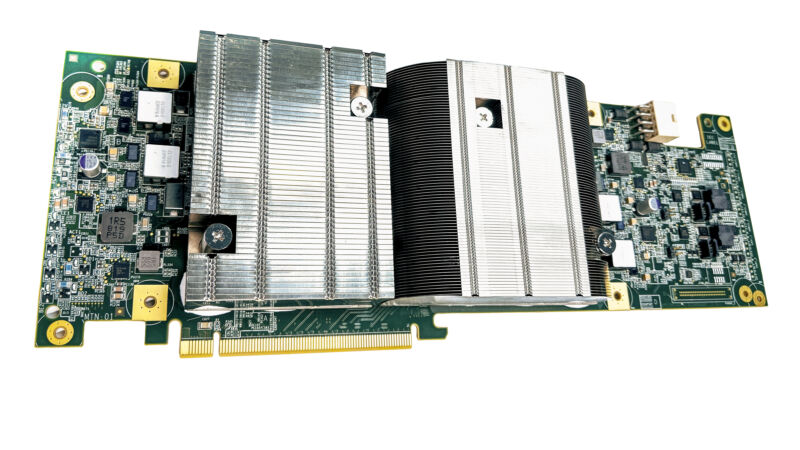YouTube is now building its own video-transcoding chips

Enlarge / A Google Argos VCU. It transcodes video very quickly. (credit: Google)
Google has decided that YouTube is such a huge transcoding workload that it needs to build its own server chips. The company detailed its new "Argos" chips in a YouTube blog post, a CNET interview, and in a paper for ASPLOS, the Architectural Support for Programming Languages and Operating Systems Conference. Just as there are GPUs for graphics workloads and Google's TPU (Tensor processing unit) for AI workloads, the YouTube infrastructure team says it has created the "VCU" or "Video (trans)Coding Unit," which helps YouTube transcode a single video into over a dozen versions that it needs to provide a smooth, bandwidth-efficient, profitable video site.
Google's Jeff Calow said the Argos chip has brought "up to 20-33x improvements in compute efficiency compared to our previous optimized system, which was running software on traditional servers." The VCU package is a full-length PCI-E card and looks a lot like a graphics card. A board has two Argos ASIC chips buried under a gigantic, passively cooled aluminum heat sink. There's even what looks to be an 8-pin power connector on the end, because PCI-E just isn't enough power. Google also provided a lovely chip diagram, listing 10 "encoder cores" on each chip, with Google's white paper adding that "all other elements are off-the-shelf IP blocks." Google says that "each encoder core can encode 2160p in realtime, up to 60 FPS (frames-per-second) using three reference frames."
The cards are specifically designed to slot into Google's warehouse-scale computing system. Each compute cluster in YouTube's system will have a section of dedicated "VCU machines" loaded with the new cards, saving Google from having to crack open every server and load it with a new card. Google says the cards resemble GPUs because that's what fits in its existing accelerator trays. CNET reports that "thousands of the chips are running in Google data centers right now" and, thanks to the cards, individual video workloads like 4K video "can be available to watch in hours instead of the days it previously took."
Read 8 remaining paragraphs | Comments
from Tech – Ars Technica https://ift.tt/2RXlLVW
Comments
Post a Comment